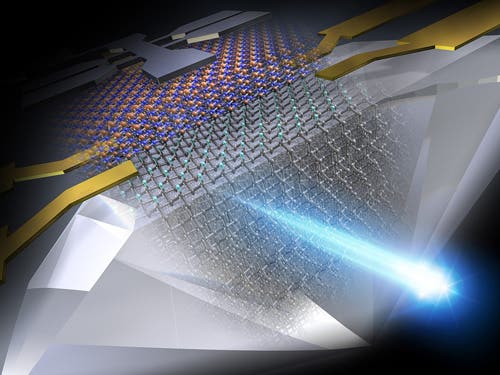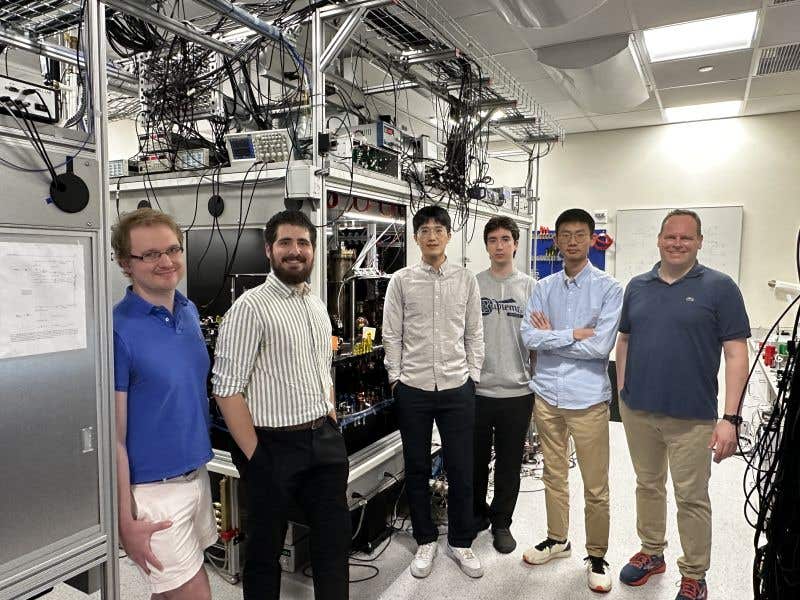World’s first diamond transistor paves the way towards high-speed computing
Researchers have developed the first “n-channel” diamond-based transistor, a significant step towards extremely high-temperature processors.

Researchers have developed the first "n-channel" diamond-based transistor, a significant step towards processors capable of functioning at extremely high temperatures. (CREDIT: Creative Commons)
In Japan, researchers have developed the first "n-channel" diamond-based transistor, a significant step towards processors capable of functioning at extremely high temperatures. This advancement eliminates the necessity for direct cooling and broadens the range of environments where processors can operate efficiently.
Diamond, employed in transistors as electrical switches that toggle between 1 and 0 when voltage is applied, promises electronics that are smaller, faster, and more energy-efficient.
Additionally, these transistors can endure harsher conditions compared to conventional components, operating at temperatures exceeding 572 degrees Fahrenheit (300 degrees Celsius) and withstanding higher voltages before malfunctioning.
The findings of this research were detailed in a paper published in the journal Advanced Science.
Silicon transistors, utilized in processors since the early 1960s, are nearing their physical limits as the size of the manufacturing process approaches the width of silicon atoms. The width has shrunk to as low as 3 nanometers, close to the 0.2-nanometer width of silicon atoms.
Transistors come in various types, with the metal-oxide-semiconductor field-effect transistor (MOSFET) being the most commonly used. The term "metal-oxide-semiconductor" refers to the silicon wafer of a typical computer chip. Within MOSFETs, there are different configurations, namely n-channel and p-channel.
N-channel transistors utilize electrons to carry charge, while p-channel transistors utilize "holes" created by escaped electrons. N-channel transistors are often found in high-side power switches for battery protection.
Related Stories
In the recent study, researchers constructed a transistor with two "phosphorus-doped diamond epilayers." Phosphorus doping, which involves adding the element to the layers, enhances conductivity.
This n-channel layer, containing free electrons, replaces the silicon-based layer in a conventional chip. The circuit closes to represent a 1 when enough electrons flow between two ends of a gate known as "the source" and "the drain."
The team lightly doped one layer with phosphorus and heavily doped the second layer positively. Subsequently, annealed titanium "source" and "drain" contacts were formed on the heavily doped layer, followed by the addition of 30-nanometer-thick aluminum trioxide to act as an insulator. This resulted in the world's first operational n-channel MOSFET transistor made from diamond.
High-quality lightly phosphorus-doped n-type diamond epilayer. (CREDIT: Advanced Science)
The researchers conducted various tests to evaluate conductivity performance. "The n-type diamond MOSFETs exhibit a high field-effect mobility around 150cm2/V/sec at 573K," they stated in their paper, indicating high conductivity and stability at extremely high temperatures. This was "the highest among all the n-channel MOSFETs based on wide-bandgap semiconductors," they emphasized.
Diamond possesses a wider bandgap compared to silicon, with a bandgap of 5.47 electronvolts (eV) for diamond and 1.12 eV for silicon. A wider bandgap enables components to operate at higher voltages and frequencies.
MOSFETs based on phosphorous doped n-type diamond and the electrical characteristics with temperatures up to 573 K. (CREDIT: Advanced Science)
This breakthrough isn't the first in diamond transistors. Another team published a study in January 2022 in the journal Nature detailing diamond-based p-channel wide-bandgap transistors. However, until now, scientists had been unable to demonstrate a functional n-channel diamond-based transistor.
Regarding future applications, the scientists proposed potential uses in energy-efficient electronics, spintronic devices, and sensors made from micro-electromechanical systems (MEMS) capable of operating in harsh environments such as space. Diamond semiconductors also find applications in supercomputers, electric vehicles (EVs), and lighter, more durable consumer electronics.
For more science and technology stories check out our New Innovations section at The Brighter Side of News.
Note: Materials provided above by The Brighter Side of News. Content may be edited for style and length.
Like these kind of feel good stories? Get the Brighter Side of News' newsletter.



